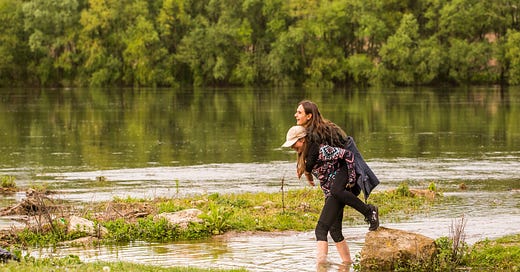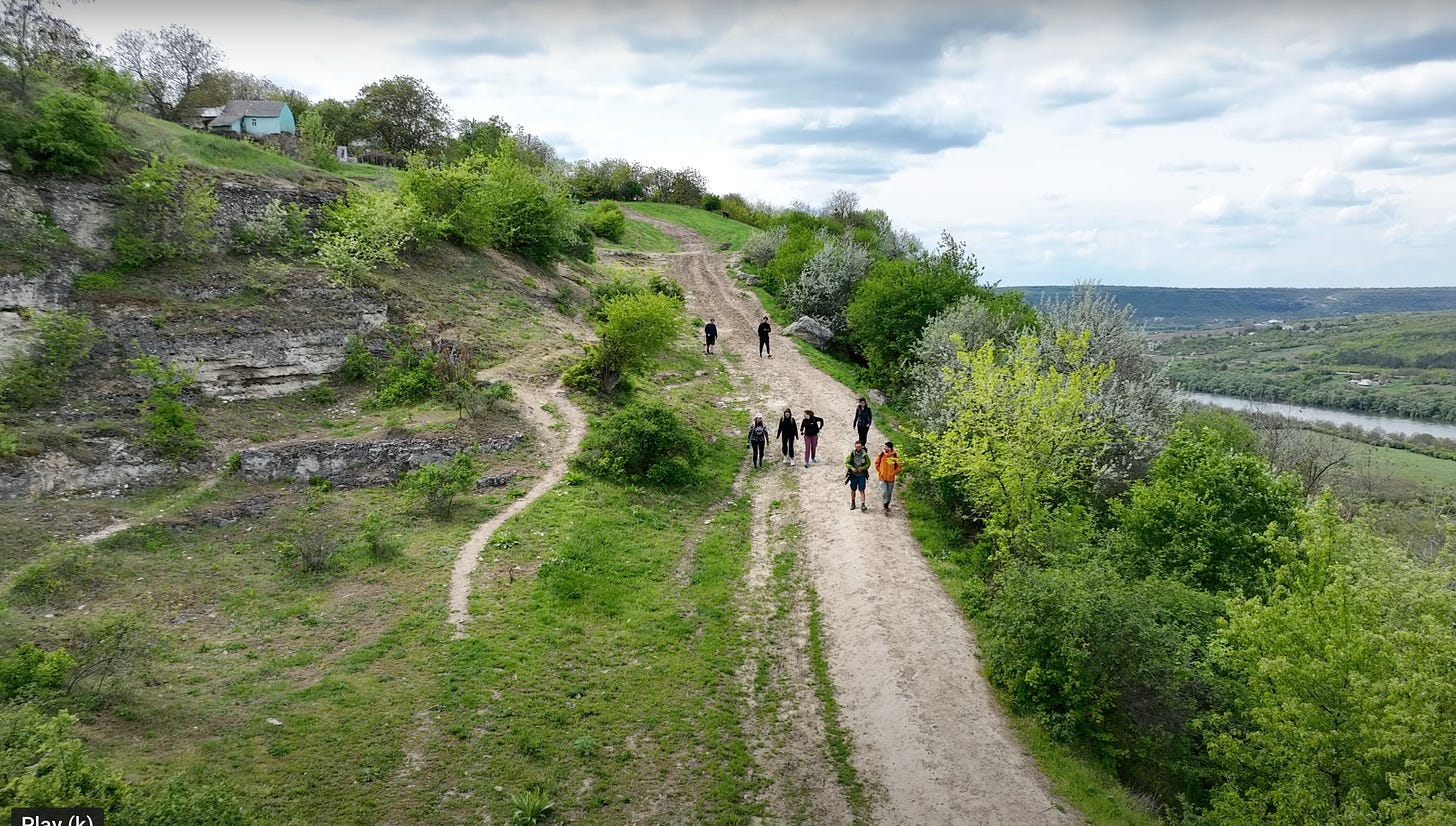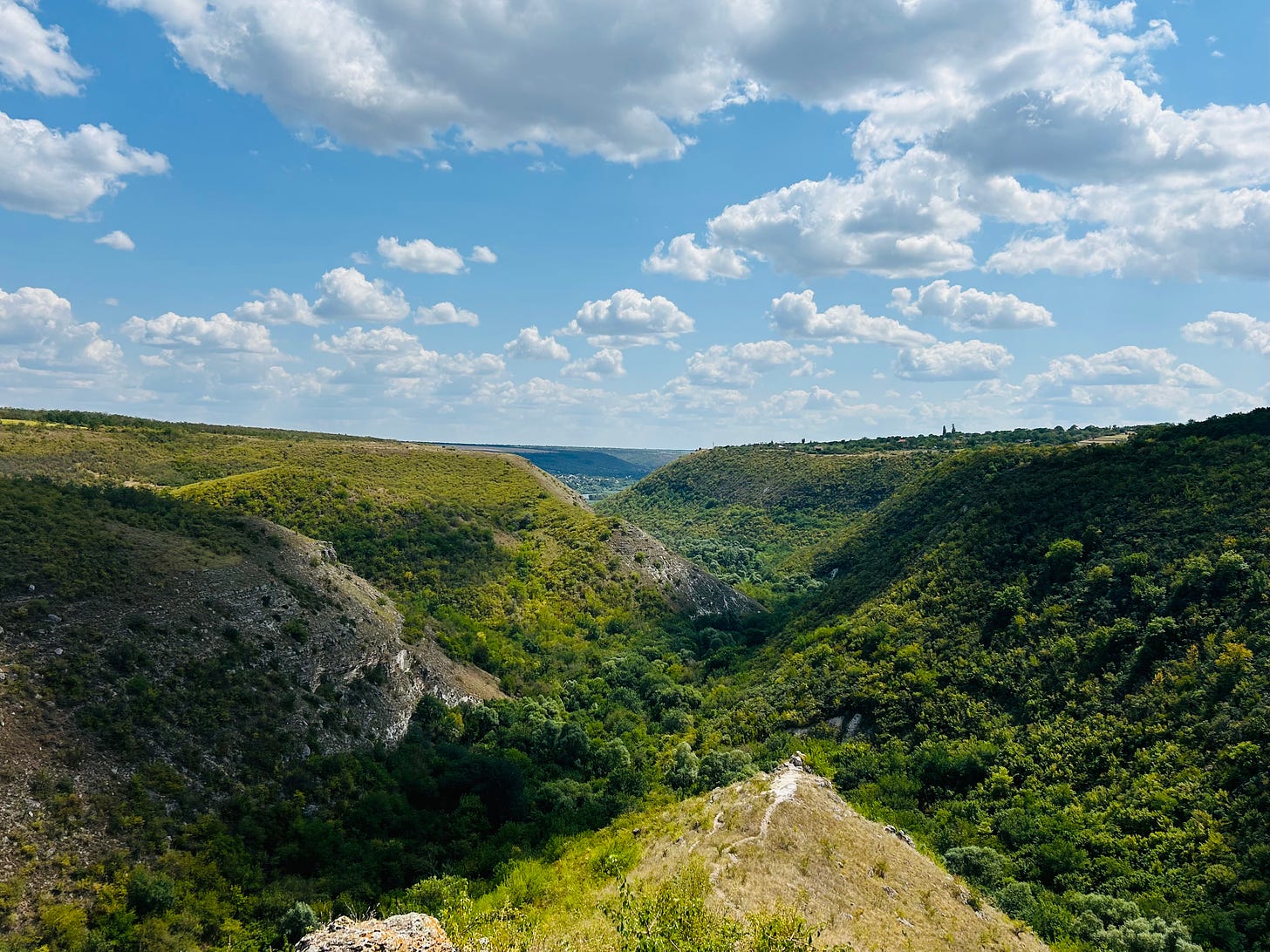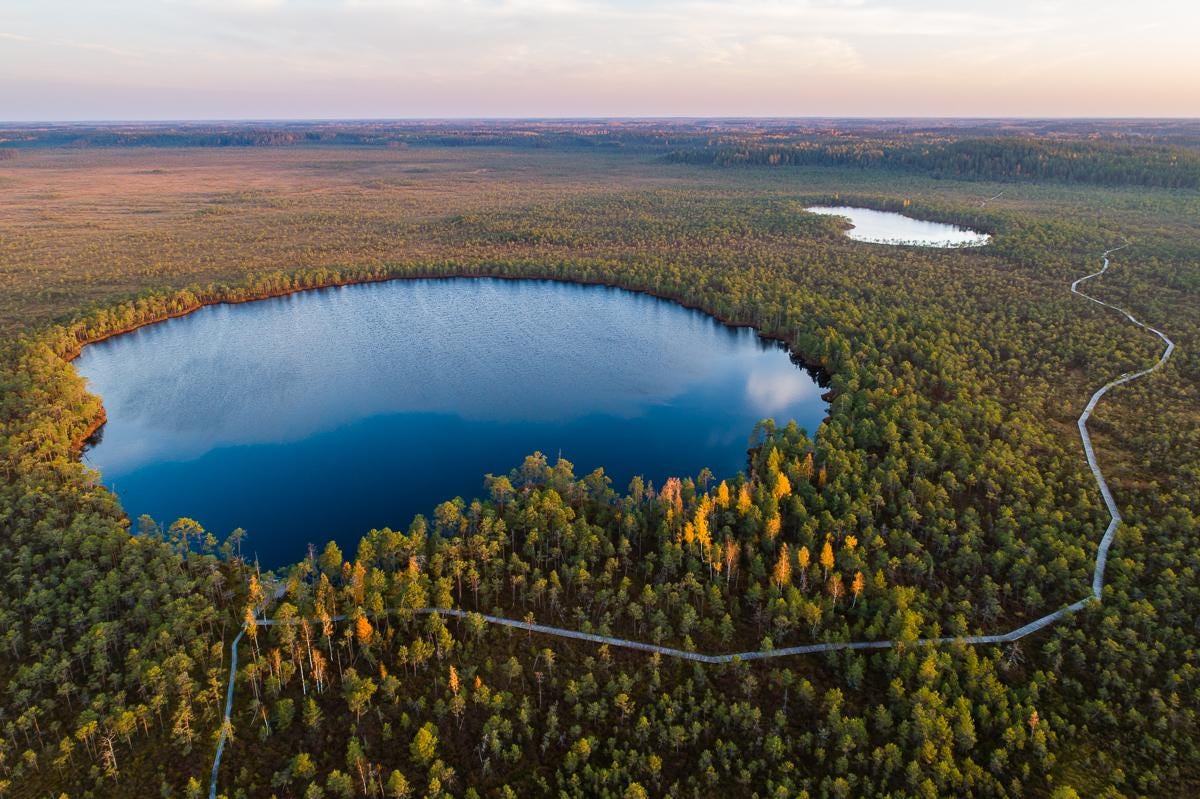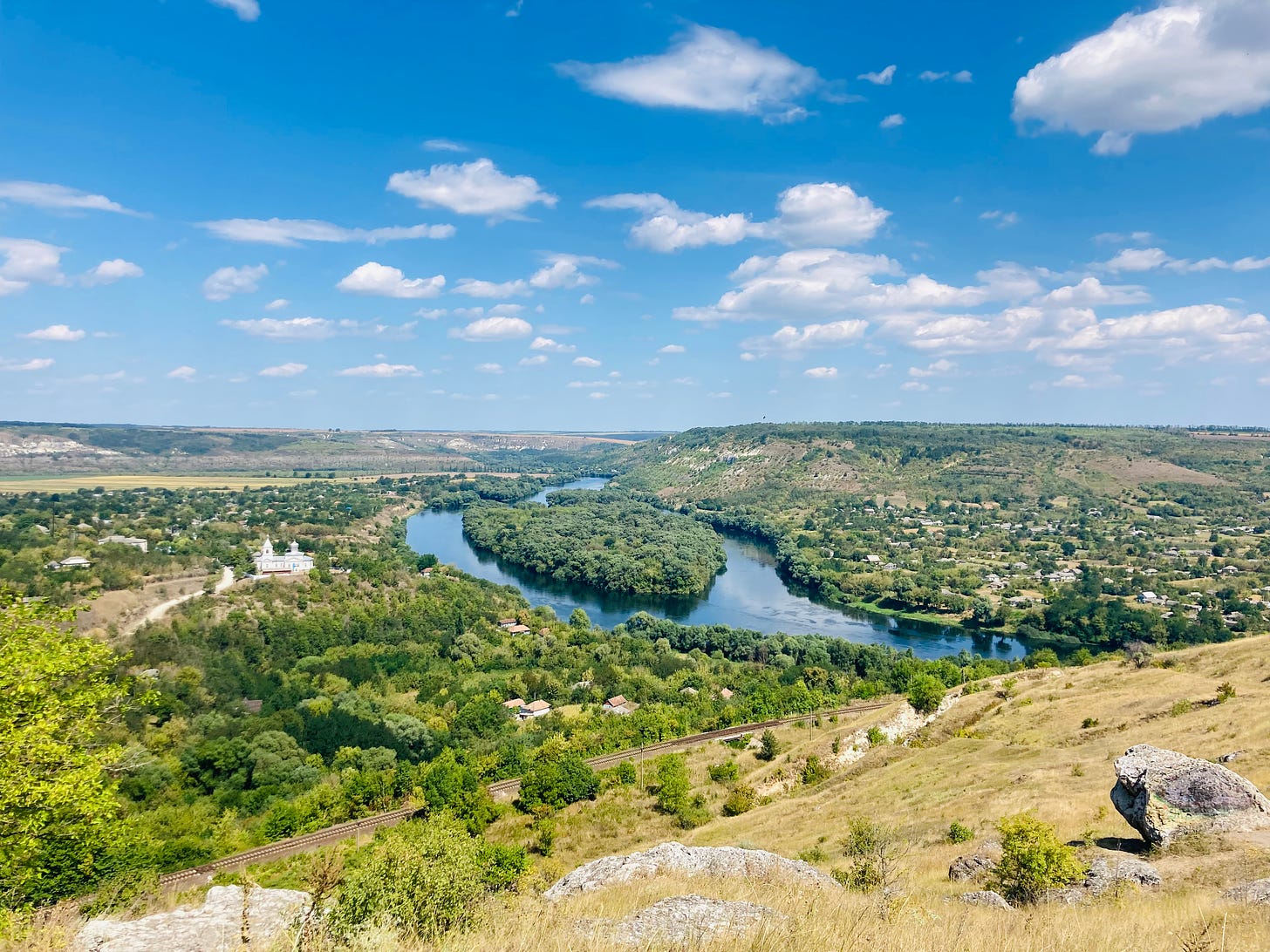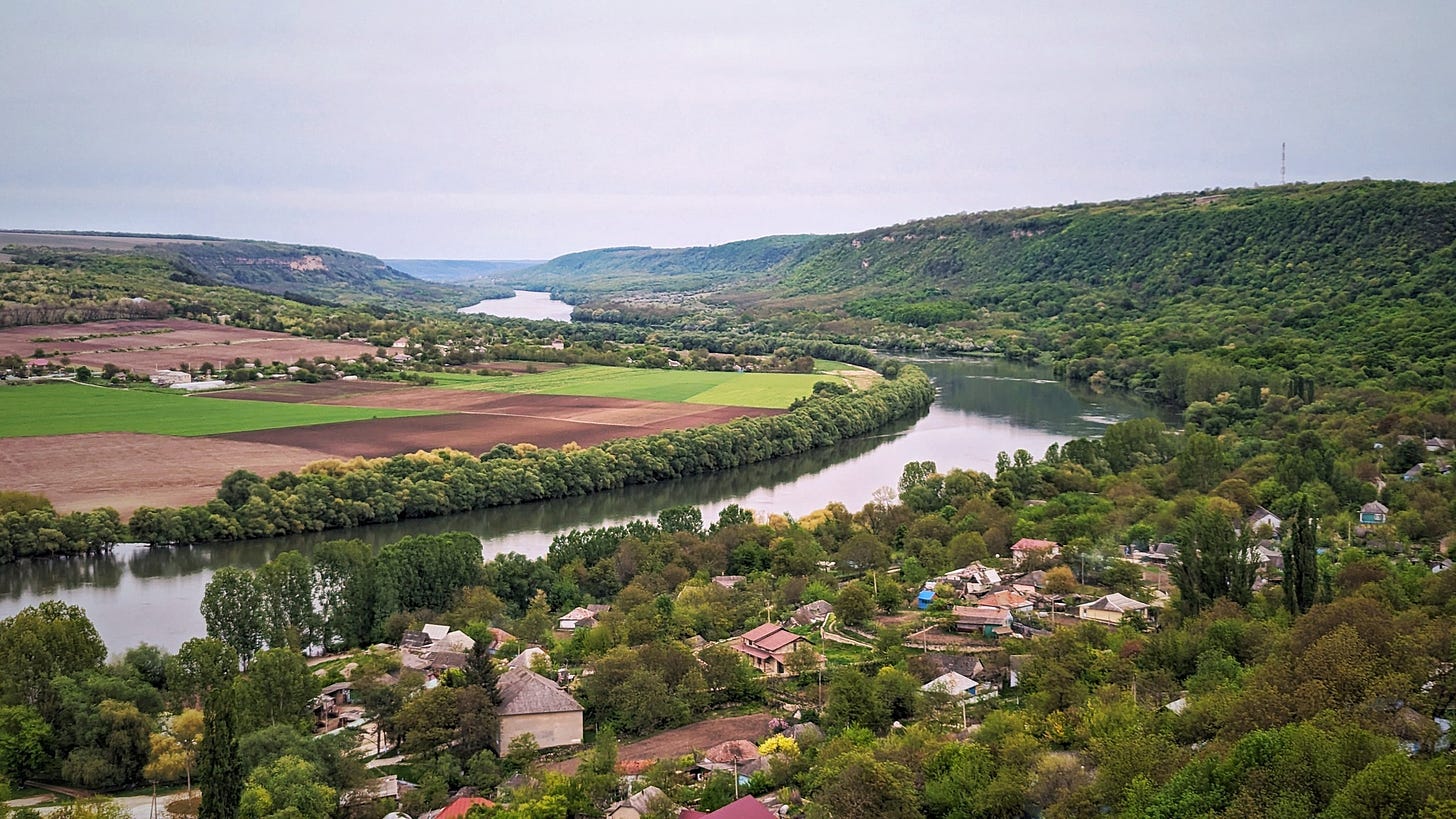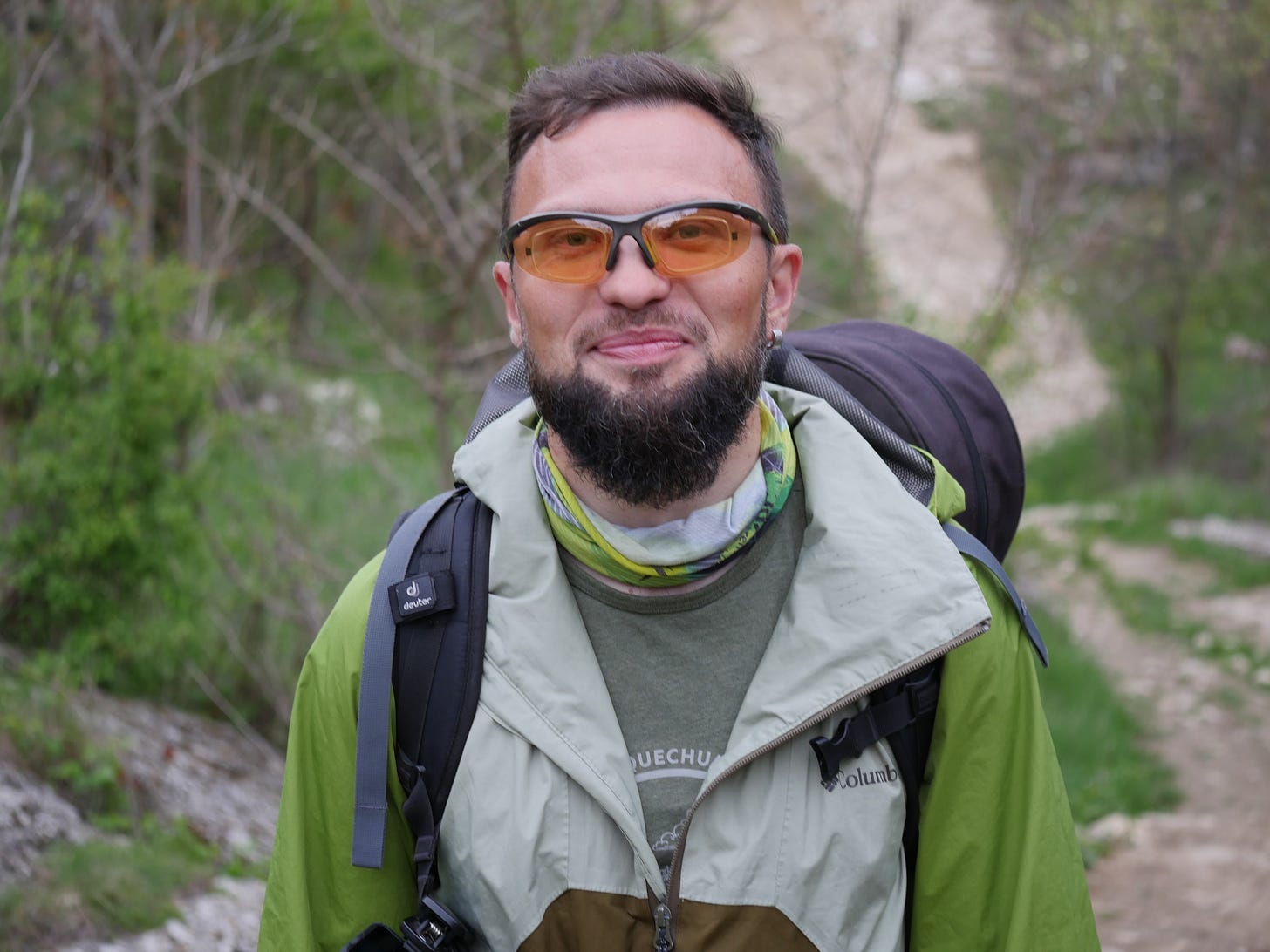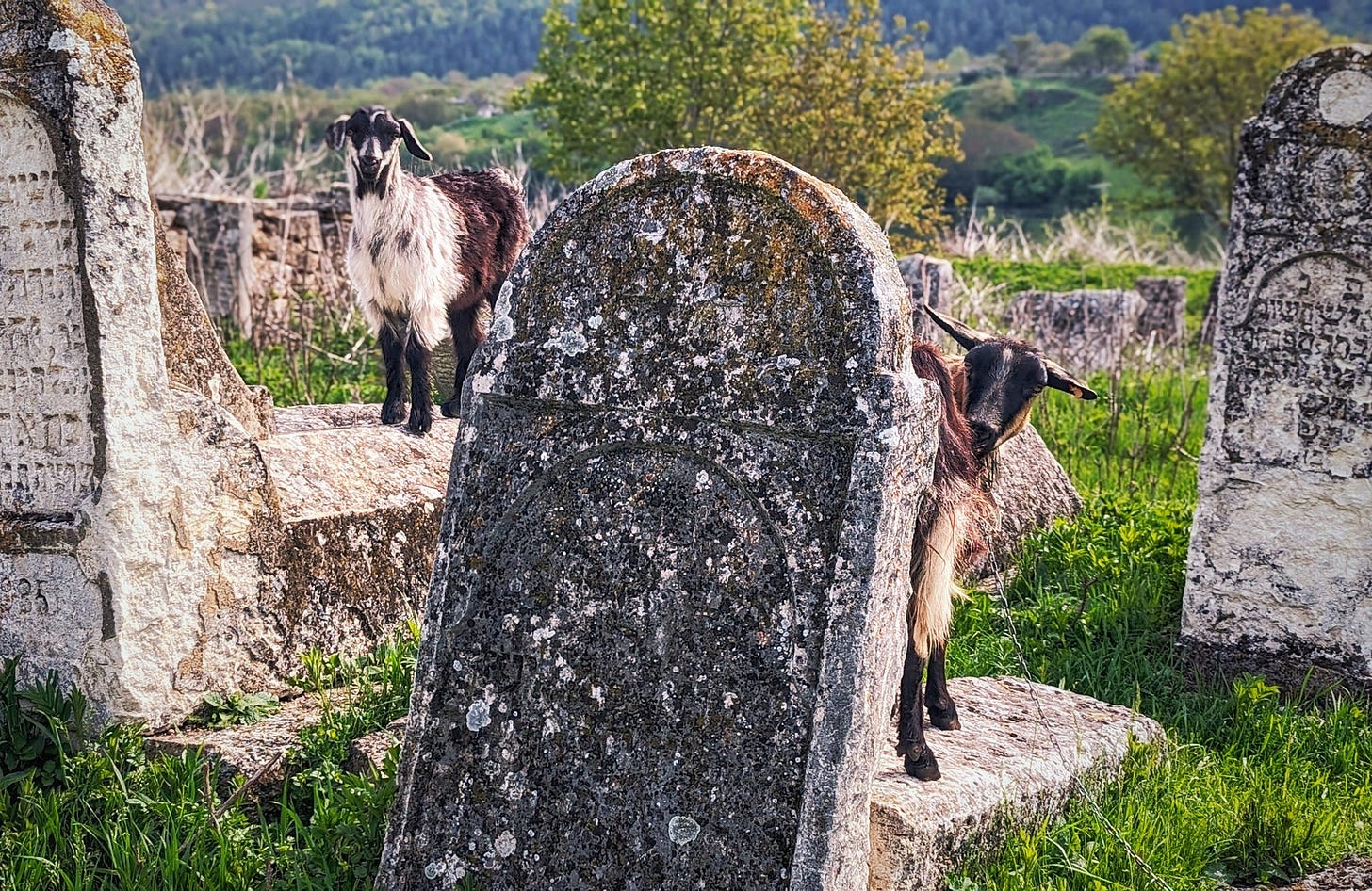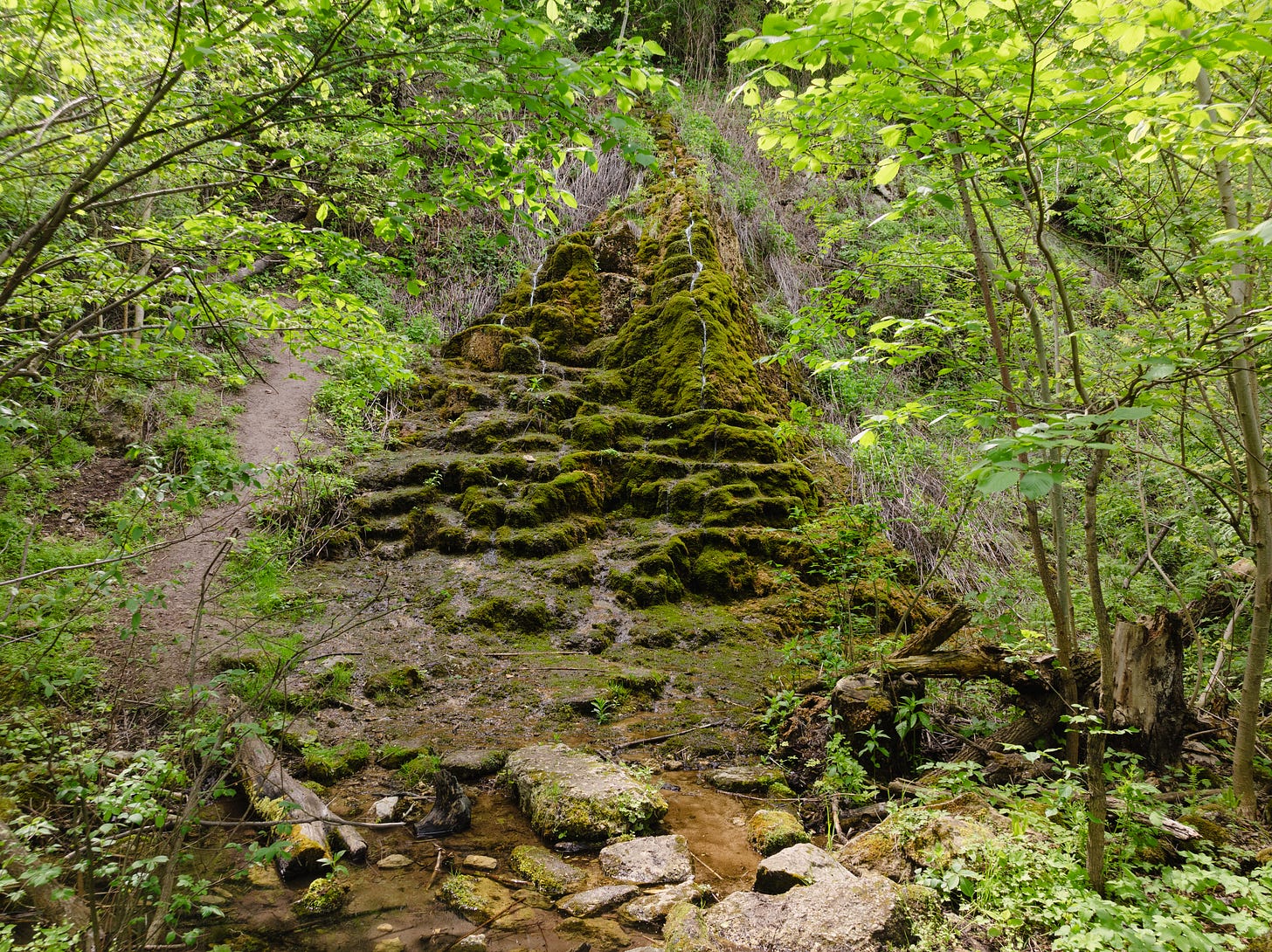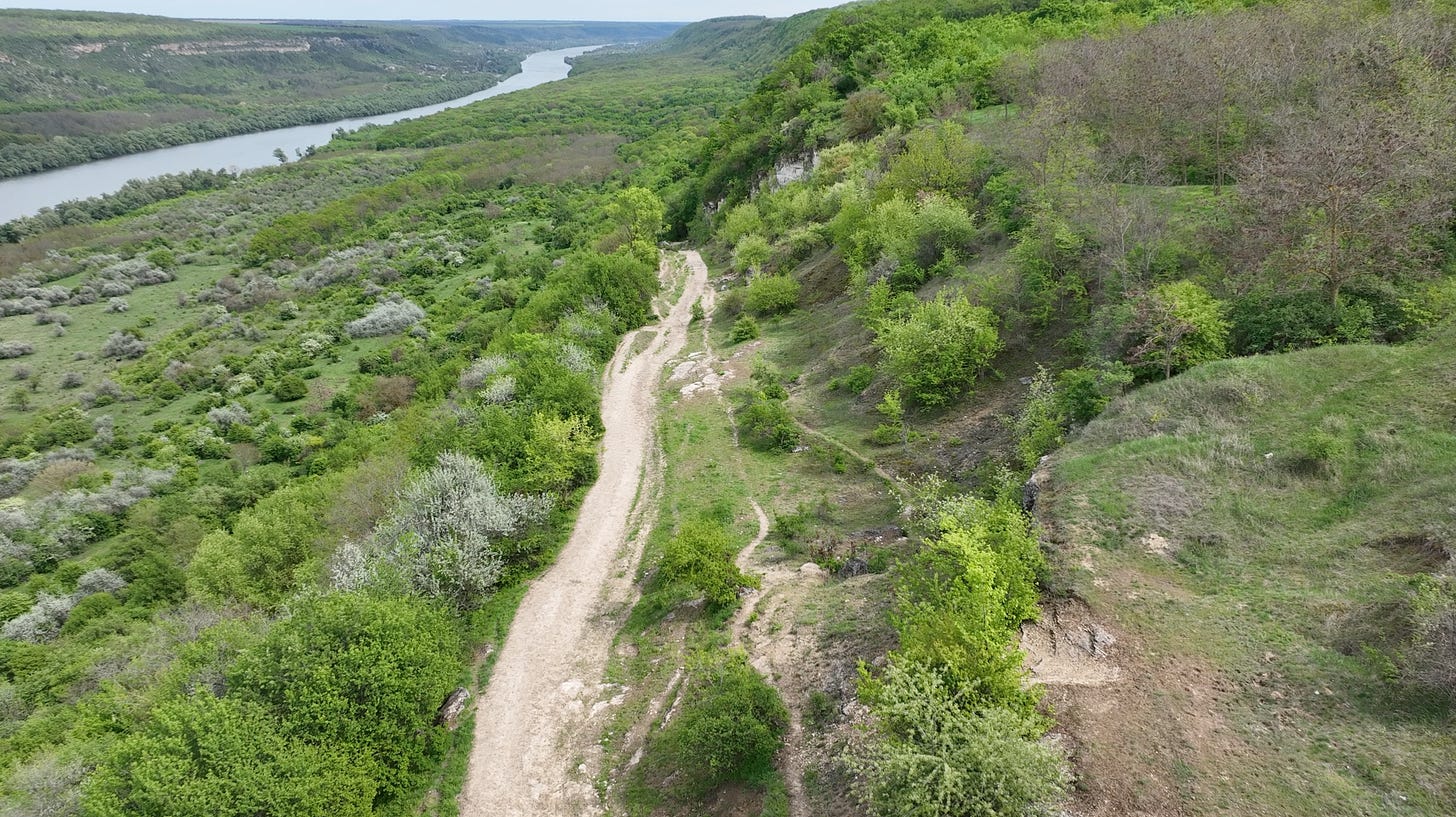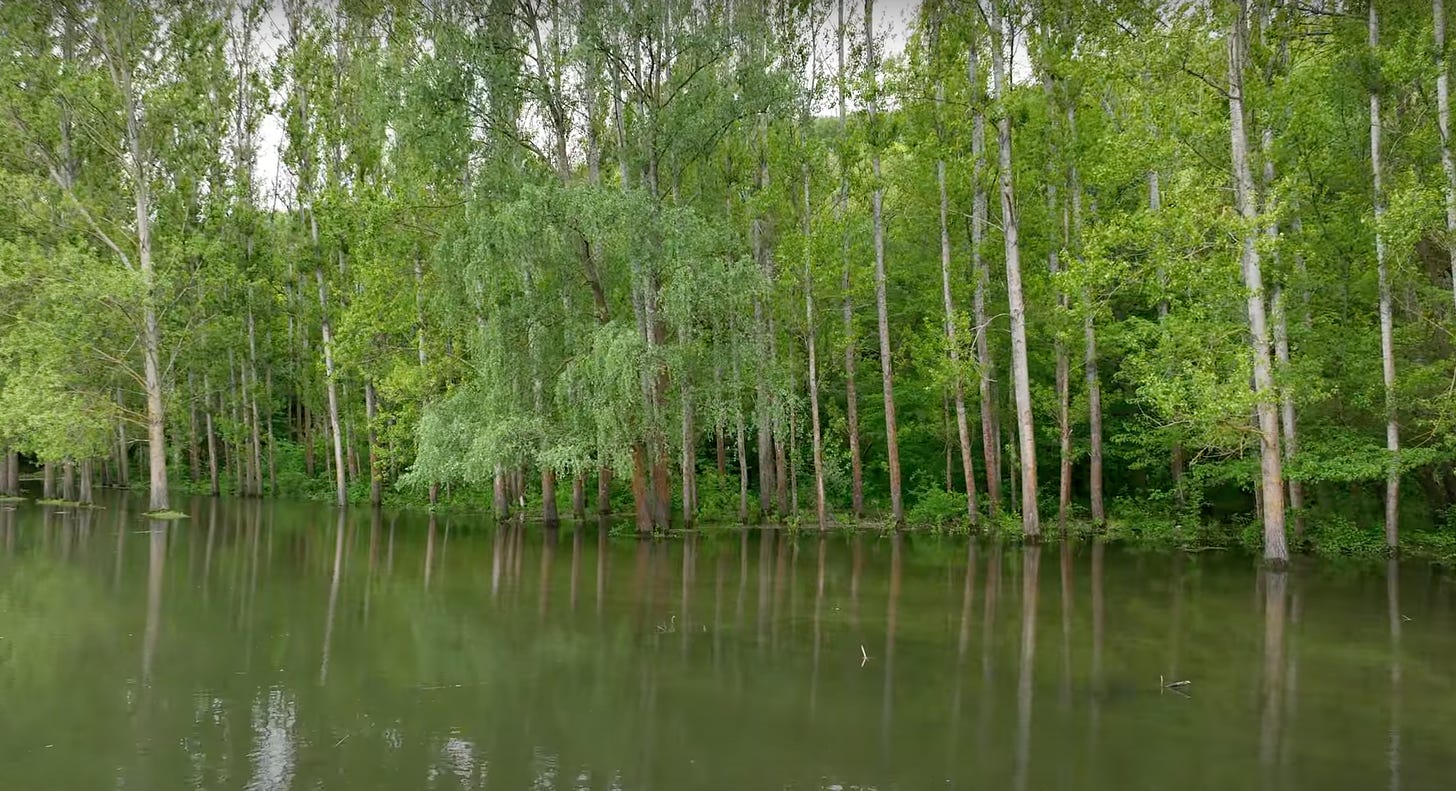We went hiking in Moldova, a country with few official hiking routes. Overall, hiking remains a largely unexplored opportunity in this country.
While Europe is home to an extensive network of well-developed hiking trails, and hiking is a popular outdoor activity across the continent, Moldovans are yet to discover this possibility.
When I asked locals in Chișinău if they had ever hiked in Moldova, the answer was that hiking is impossible here due to a lack of mountains. So, for hikes, you have to at least travel to the Romanian Carpathians. In the minds of Moldovans, heights seem necessary for this sport. Among villagers, the prevailing opinion is that going for a walk without a destination is just a waste of time.
Let me tell you something different – I am from Estonia, which is even flatter than Moldova. The height of the highest peak is similar: Moldova’s highest point, Bălănești Hill, is 430 meters, while Estonia's Suur Munamägi is 318 meters. However, the rolling hills common in most parts of Moldova are quite rare in my home country. For example, views like those in Țipova or Naslavcea can’t be found in Estonia.
But hiking is indeed one of the national sports of Estonia, and the lack of mountains does not affect this, even though Scandinavia is not far away. Estonia has a well-developed and diverse network of hiking trails that even cross wetlands.
The longest hiking trail is the coastal hiking route, which runs along the Baltic Sea coast and is part of the European long-distance path E9. The total length of the route is 1,200 km, of which 580 km are in Latvia and 620 km in Estonia. Estonia's longest inner hiking trail crosses nine counties and a series of protected areas, showcasing 820 kilometers of Estonia's landscapes. The trail is marked in nature with white-green paint markings and directional signs.
The State Forest Management Centre (RMK) is mostly responsible for maintaining and marking these trails, with its own budget for this purpose. Nature tourism and environmental education are part of their work alongside forest management. The entire population watches closely to ensure that nature is well cared for in Estonia.
Hiking has become a significant part of Estonian tourism, and there is no reason why Moldova can’t adopt this already popular activity.
Moldova's beautiful nature offers plenty of opportunities for hiking, but official, well-marked trails are relatively limited. The country’s natural landscapes, such as the Codru Forest, the Nistru River Valley, and Orheiul Vechi National Park, offer great potential for hiking, but many of the routes are not formally marked or maintained as official trails. I remember the day we accidentally ended up at one of the iconic sites in Naslavcea – the Heart of Moldova viewpoint. We were simply following one of the locals who wanted to "show us something." This viewpoint, with its tiny sign, should not be accidentally found.
In recent years, there have been efforts to promote eco-tourism and outdoor activities, and there are some initiatives to create more structured hiking paths.
However, while Moldova remains largely off the radar for international hikers, it's a great destination for those looking to explore less touristy areas. This is what makes Moldova attractive to me – it's like an undiscovered land.
Meanwhile you might have to rely on local guides or create your own path. Yevgeni Karuzo is one of the guides who organizes hikes in Moldova, among other countries. He gathers groups via social media and feels that hiking in Moldova is slowly becoming more popular among locals. Since there are few official hiking trails, he just puts the routes together himself.
“I use Google Maps to look for interesting places based on terrain or landscape. I visit them myself first, then bring a group with me,” he describes how he plans out the route. We joined him on one spring day.
We hiked near Socola and Vadul Rașcov. Just two hours from the city madness, we found ourselves in the most peaceful place on earth, not far from the Ukrainian border.
There is a mystical place in the north of Moldova where the Nistru River once divided two Jewish settlements. On one side, the old Jewish cemetery in Vadul Rașcov serves as a reminder of the once-thriving community. On the other side, in the Transnistria region, lie the ruins of an 18th-century synagogue and its accompanying cemetery in Rașcov. Before the Second World War, Rașcov was home to a vibrant Jewish community numbering in the thousands.
From the old cemetery in Vadul Rașcov, our journey led us to the village of Socol, where we discovered the greenest forest.
These sites are not unknown to Moldovans who like to explore their country. Many have visited the old cemeteries or climbed up the limestone rocks. But for us as tourists, the guide was necessary. No official signs were to be found.
Yevgeni showed us a forest path to an abandoned wine cellar. We then came across a picturesque waterfall. But here, once again, we were the only ones.
Moldova is an agrarian country, so if you walk through the forest, there is always a field not far away. You might feel like the only one in those forests, but you will meet many animals along the way and pass by numerous farmhouses. The truth is, many of these homes are abandoned.
This made me reflect on how far we’ve moved away from nature and the cycle of life in Western society. It’s like we live in a bubble. Here, in the Moldovan countryside, people grow everything themselves, including pigs and chickens. They are their family members, not just products from shelves.
As the day neared sunset, we bonded more with our fellow hikers. The type of bonding you get after a long day overcoming obstacles.
As we got ready to conquer the limestone rock nearby, several rocks fell one meter away from us. Even if our guide said that this was the first time a rock had fallen under his watch, and that locals use this route a lot (they even had a picnic uphill), it is always a possibility when you hike on routes that are not marked and maintained. You have to be more careful.
Overall, our hike was around ten kilometers, and yes, it took a whole day! There was a lot of interaction with local farmers, as well as finding the proper way to walk since the Nistru had flooded some roads. We made it back to Chișinău in darkness. The team of two Estonians and four Moldovans were all happy, tired, and satisfied – discovering nature gives you something more than you can ever expect.
Watch the Journo Bird’s hiking adventure on a youtube video here.

